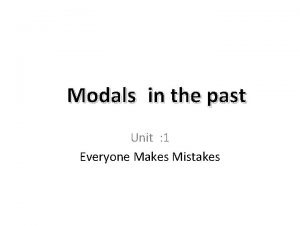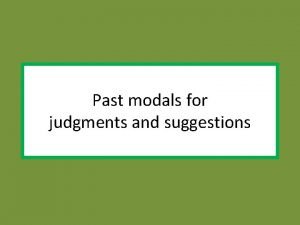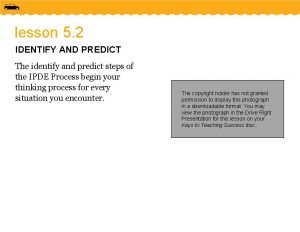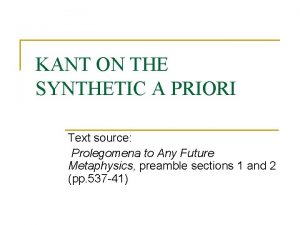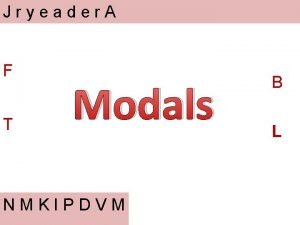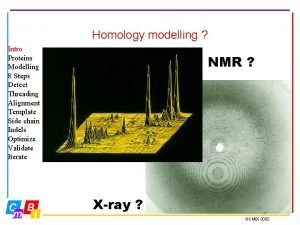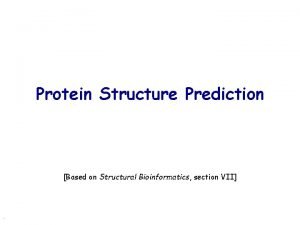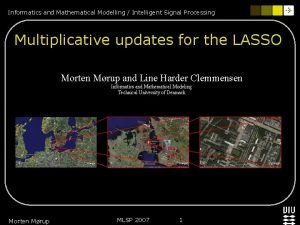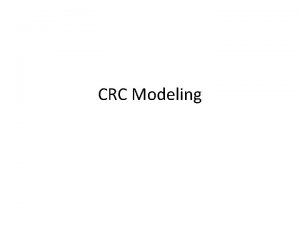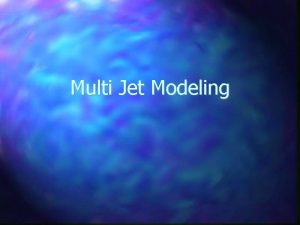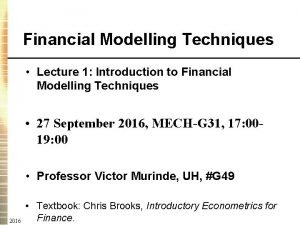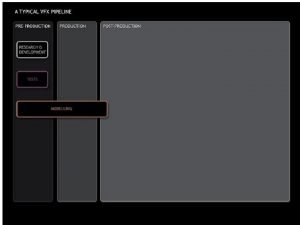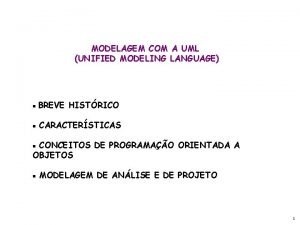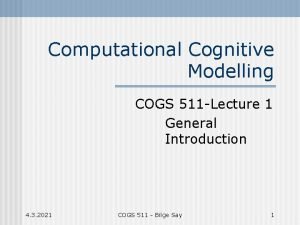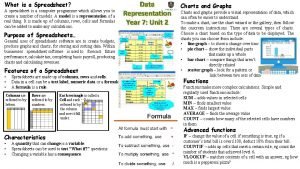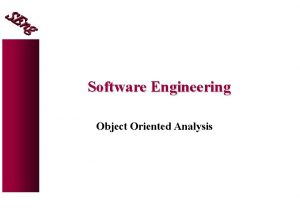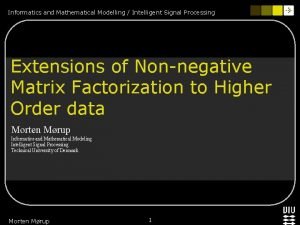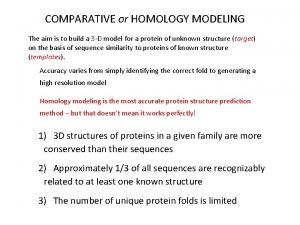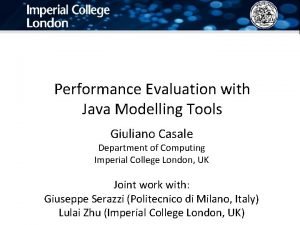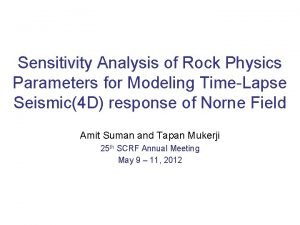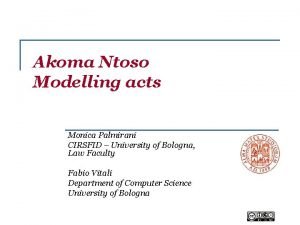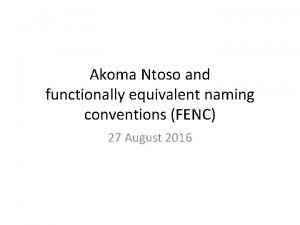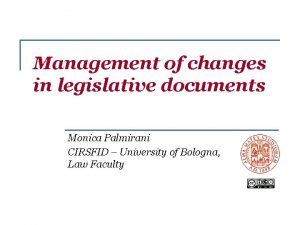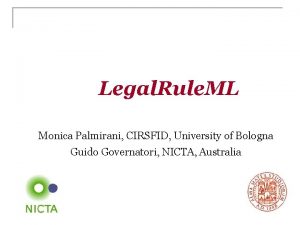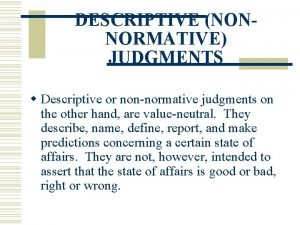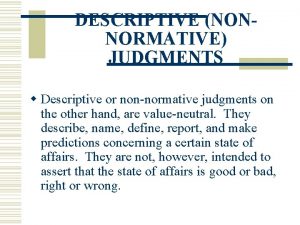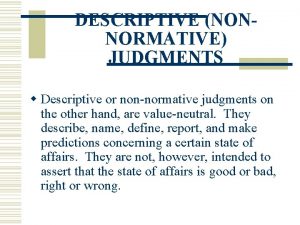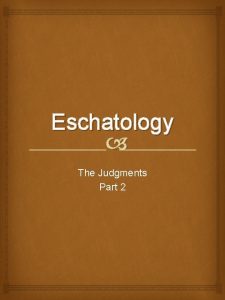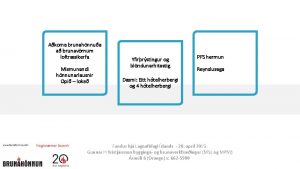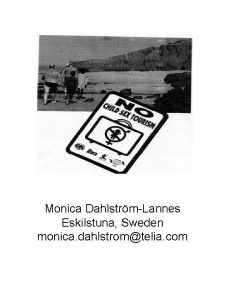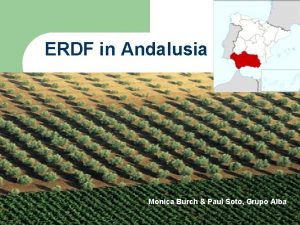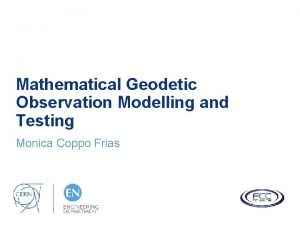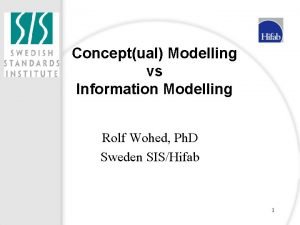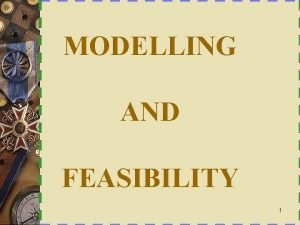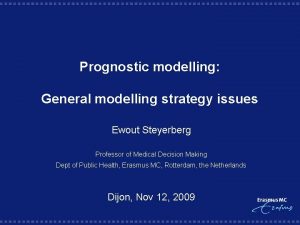Modelling of judgments with Akoma Ntoso Monica Palmirani





























![Text of the judgment <item id="mot-lis 1 -ite 1"> <num>[10]</num> <p> I do not Text of the judgment <item id="mot-lis 1 -ite 1"> <num>[10]</num> <p> I do not](https://slidetodoc.com/presentation_image/2b1a41ebf36095c8265ef6276f849d04/image-30.jpg)

- Slides: 31

Modelling of judgments with Akoma Ntoso Monica Palmirani CIRSFID – University of Bologna, Law Faculty

Index n Akoma Ntoso for judgments n The Document model n The Metadata model n The Judicial Legal Knowledge modelling n Conclusions: benefits of the standard 2

AKOMA NTOSO for judgment (1/2) Common standard for any: q type of court: International courts or supra-order courts (e. g. , ACHPR, ACJ, etc. ), supreme courts, high courts, constitutional courts, federal courts, etc. q level of judgment: first order, appeal, etc. q nature of case: civil, penal, administrative, etc. q judiciary system tradition: common and civil law Document model: q the document is the center of the representation q descriptive approach rather than prescriptive n “Guide to Uniform Production of Judgments” Honourable Justice, Olsson, L, T. 1999, Supreme Court of South Australia n “Canadian Guide to the Uniform Preparation of Judgments”, Pellietier, Poulin, Felsky, 2002, Canadian Judicial Council and the Judges n “Style Guide for the Writing of Judgments”, Constitutional Court of South Africa, January 2007 3

AKOMA NTOSO for judgment (2/2) Metadata model: q each actor in the workflow chain can annotate with specific metadata the document (as a minimum, her name, role, and actions) q semantic classification of the document and of individual fragments of text is possible Unique naming convention: q URIs for citations across different sources: precedents, jurisprudence, legislation, regulations, foreign case-laws, doctrine, books, articles, etc. q URI for multimedia objects: video, audio, etc. q URI for annexes to the case-law: other documents of the trial q URI are also used to express the Minimal Neutral Citation 4

The structure of a judgment in Akoma Ntoso 5

n n n n Type. Header of court Name and place of court Number case Parties Neutral citation Names of Judges (Coram) Dates: delivery, hearing, publication, registration, etc. Summary/Abstract 6

Header 7

Body Structure Type: n Hierarchy n Lists n Blocks n Multimedia object (video, audio) 8

Body of judgments n Introduction: the summary of the case n Background: the description of the facts n Motivation: the argumentation of the judges n Decision: the decisions of the judges and the final order 9

Citations Include: n Citations n Quoted text n Notes 10

Decision & Conclusion n Decision q n Qualification of the decision (penality, etc. ) Conclusions q Signatures q Date q Place q Qualification of the voting (minority report) 11

Metadata 12

n Metadata (1/2) Descriptive metadata: date of delivery, date of publication, number of registry, name of chancellor, nature of the case, etc. n Classification metadata: matter of the case (values out of domain-specific thesauri) n Lifecycle metadata: the history of the document n Workflow metadata: the administrative steps and actions of the trial (first order, appeal, etc. ) structure metadata 13

Metadata (2/2) n Citations: it is possible, through the references, to obtain all the documents cited by this case-law and all the documents that cite this case-law n Semantic annotation of the case-law: q q q n relevancy for the law report (reportable criteria: e. g if the case introduces a new rule of law) citation role in the current judgment with respect to the precedents semantic annotation of fragment of text (ratio decidendi) Ontology: People, Organization, Role, Actions, etc. 14

metadata Connection Meta & Ontology structure ontology 15

Semantic annotation: three relationships 3 2 1 2 <lawyer id="lawyer-3" refers. To="#Plessis" for="#appellant" as="#advocate" empowered. By=“#Kruger" > 3 J. A. DU PLESSIS 1 </lawyer> 16

Citations classification Typology q Legislation, Subsidiary legislation, Regulation q National and foreign case-law q Jurisprudence, doctrine q Book, article, other sources Role analysis q for argumentation type (dissenting, applying, exception, supporting, overruling, analogy, etc. ) q for history (connected case, dismissed, confirmed) Static or Dynamic q Contrary to legislation, where the citation are mostly dynamic q In the case-law the citation are mostly static “tempus regit actum” 17

Citations analisys n Analysis of different classifications existing in the main legal databaes (Shepard’s Citations) q q q n n Lexis. Nexis Westlaw Kluwer in Jurisprudence and in several court best practices: e. g. , q q q Canada USA South Africa Kenya Australia 18

Classification of the references 19

Anatomy of Judgment classification 20

Classification of the case-law n n n n deny dismiss uphold revert replace. Order remit decide approve 21

Classification of the voting n n n Agreeing Dissenting Approving Rejecting Null 22

Text semantic annotation Each part of the text can be annotated for different purposes: q Examining and comparing the arguments of the judges: logic consistency check q Legal concept annotation: retrieval and comparison Example of semantic annotation: q In the Background: modeling the case for the comparison with other real cases q In the Motivation: the part of the text relevant to the support the decision and new rule of law introduced (ratio decidendi) q In the Decision: the statement on the parties 23

Conclusions: benefit of the standard (1/3) For the citizens, enterprises, legal experts n Semantic retrieval: to extract and manipulate the knowledge in the case-law n Comparison: to compare different case-laws also coming from different countries n Traceability: to allow citizens and enterprises tracing the judicial proceeding and having awareness of the schedule, the expectation and the final results 24

Conclusions: benefit of the standard (2/3) For the Judge and the Court System n Drafting and Consolidation: to support the judge with tools (editors) that help to write the judgments and to consolidate decisions coming from different judges n Decision support system: to help young judges to learn from the precedents and to maintain a quality standard n Dialogue: to help judges to learn from each other n Workflow support: to help the judge in all steps of the trial n Preservation: by making the XML document independent of the applications and tools used to generate it, publish it, access it. 25

For the publishers: Conclusions: benefit of the standard (3/3) n Publishing: to help the publishing process, to improve the commercial activity of the publisher, to allow for different manifestations of the same content (Gazette, paper, law report, etc. ) n Law report definition: to improve the law report definition. E. g. selection of which case-laws are relevant in view of their insertion in the national law report 26

Example: Lifecycle and Workflow <lifecycle source="#bungeni"> <event date="2008 -11 -26" id="e 1" source="" type="generation"/> </lifecycle> <workflow source="#bungeni"> <step date="2007 -08 -23" id="a 1" refers. To="hear"/> <step date="2008 -11 -05" id="a 2" refers. To="secondhear"/> </workflow> 27

References to the ontology: roles <TLCRole id="Appellant" href="/ontology/role/Editor" show. As="Appellant"/> <TLCRole id="Respondant" href="/ontology/role/Editor" show. As="Respondant"/> <TLCRole id="Prosecutor" href="/ontology/role/Prosecutor" show. As="Prosecutor"/> <TLCRole id="Sollecitor" href="/ontology/role/Sollecitor" show. As="Sollecitor"/> <TLCRole id="Corrispondent" href="/ontology/role/Corrispondent" show. As="Corrispondent"/> <TLCRole id="jja" href="/ontology/role/judgeofappeal" show. As="jja"/> 28

Legal Analysis <analysis source="#bungeni"> <judicial> <result type="approve"/> <overrules id="jud-an 1"> <source href="#mot-lis 1 -ite 1"/> <destination href="/za/judgment/SA 491/eng@/main. xml"/> </overrules> <supports id="jud-an 2"> <source href="#par 13"/> <destination href=" ="/za/judgment/SA 983/eng@/main. xml "/> </supports> </judicial> </analysis> 29
![Text of the judgment item idmotlis 1 ite 1 num10num p I do not Text of the judgment <item id="mot-lis 1 -ite 1"> <num>[10]</num> <p> I do not](https://slidetodoc.com/presentation_image/2b1a41ebf36095c8265ef6276f849d04/image-30.jpg)
Text of the judgment <item id="mot-lis 1 -ite 1"> <num>[10]</num> <p> I do not share the court a quo's understanding of what is meant by 'pure economic loss' in the present context. I believe its meaning to be far less metaphysical. As explained by Harms JA in <ref href="/za/judgment/SA 491/eng@/main. xml#" id="ref 1">Telematrix (Pty) Ltd v Advertising Standards Authority SA 2006 (1) SA 461 (SCA) </ref>para 1, it means simply this: <span class="quoted. Text"> 'Pure economic loss" in this context connotes loss that does not arise directly from damage to the plaintiff's person or property but rather in consequence of the negligent act itself, such as loss of profit, being put to extra expenses or the diminution in the value of property. ' </span> </p> </item> 30

References n n www. akomantoso. org www. parliaments. info, info at info@parliaments. info thank you for your attention Monica Palmirani – monica. palmirani@unibo. it 31
 Monica palmirani
Monica palmirani Past modals for judgments and suggestions
Past modals for judgments and suggestions Perfect modals examples
Perfect modals examples Making driving judgments involves
Making driving judgments involves Synthetic a priori judgments
Synthetic a priori judgments Past modals for judgments and suggestions
Past modals for judgments and suggestions Data modeling
Data modeling Algorithmic cost modelling
Algorithmic cost modelling Homology modelling steps
Homology modelling steps Phases of edlc
Phases of edlc Homology modelling steps
Homology modelling steps Modelling
Modelling Crc model
Crc model What is solid modelling
What is solid modelling Threat modelling web application
Threat modelling web application Multi jet modelling
Multi jet modelling Types of financial modelling techniques
Types of financial modelling techniques Climate based daylight modelling
Climate based daylight modelling Modelling rich interaction
Modelling rich interaction Modelling rich interaction
Modelling rich interaction Universal modelling language
Universal modelling language Modelling cost of delay
Modelling cost of delay Modelling
Modelling Language
Language Cognitive modelling
Cognitive modelling What is a spreadsheet
What is a spreadsheet Class responsibility collaborator modelling
Class responsibility collaborator modelling Modelling
Modelling Homology modelling steps
Homology modelling steps Modeling tools in java
Modeling tools in java Aloha risk assessment software
Aloha risk assessment software 150000/175
150000/175

